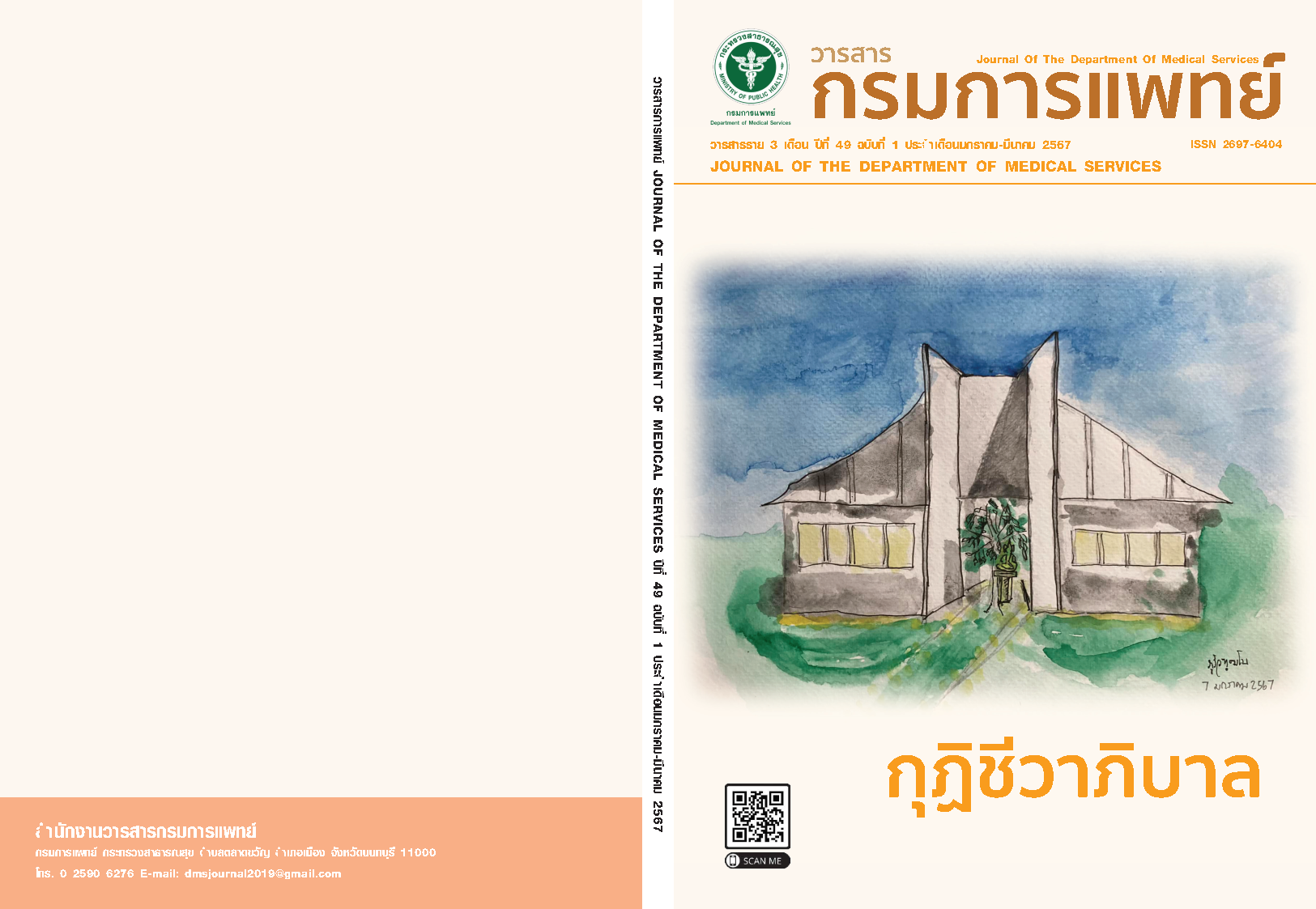Antifungal Activities of Coconut Oil on C. albicans in Vitro
Keywords:
Antifungal, Coconut oil, C. albicansAbstract
Background: The elderly have changing physical and oral conditions that affect various oral diseases, including oral candidiasis. Antifungal resistance and adverse effects have been described, resulting in reduced therapeutic efficacy. Objectives: The purpose of this study was to examine the antifungal effect of coconut oil on C. albicans in Vitro Methods: Coconut oil used for evaluating the antifungal effect on C. albicans was measured using an agar well diffusion method and specific dyes in the detection of antifungal compounds from coconut oil using a thin layer chromatography agar overlay technique. The broth microdilution method was used to determine the minimum inhibitory concentration (MIC) and minimum fungicidal concentration (MFC), crystal violet assay was used to determine the influence of coconut oil on C. albicans biofilm development, and Time-kill measurements were done to assess the fungicidal kinetics by counting viable fungal after 0, 2, 4, and 6 hours, respectively. Results: Coconut oil had no antifungal effect in the study’s agar well diffusion method, bioautography agar overlay assay, as well as the broth microdilution method. Nystatin’s minimum inhibitory concentration (MIC) was discovered to be 0.12207 unit/ ml. The effect of coconut oil on C. albicans biofilm development found that coconut oil at concentrations of 0.3–3% v/v could reduce C. albicans biofilm formation by 20-40%, and the time kill study found that nystatin at a concentration of 80,000 units/mL could kill C. albicans by the second hour of the test, whereas coconut oil at 80 percent v/v, was not able to kill C. albicans. Moreover, the levels of C. albicans had risen. Conclusion: This study did not find that coconut oil can inhibit C. albicans. However, coconut oil was found that at a concentration of 0.3-3% v/v, it could reduce the biofilm formation of C. albicans by 20 to 40%.
References
Akpan A, Morgan R. Oral candidiasis. Postgrad Med J 2002;78(922):455-9.
Ramage G, Martínez JP, López-Ribot JL. Candida biofilms on implanted biomaterials: a clinically significant problem. FEMS Yeast Res 2006;6(7):979-86.
Coulthwaite L, Verran J. Potential pathogenic aspects of denture plaque. Br J Biomed Sci 2007;64(4):180-9.
Coco BJ, Bagg J, Cross LJ, Jose A, Cross J, Ramage G. Mixed Candida albicans and Candida glabrata populations associated with the pathogenesis of denture stomatitis. Oral Microbiol Immunol 2008;23(5):377-83.
Rautemaa R, Ramage G. Oral candidosis--clinical challenges of a biofilm disease. Crit Rev Microbiol 2011;37(4):328-36.
Seleem D, Benso B, Noguti J, Pardi V, Murata RM. In Vitro and in vivo antifungal activity of Lichochalcone-A against Candida albicans biofilms. PLoS One 2016;11(6): e0157188.
Widianingrum DC, Noviandi CT, Salasia SIO. Antibacterial and immunomodulator activities of virgin coconut oil (VCO) against Staphylococcus aureus. Heliyon 2019;5 (10):e02612.
Tangwatcharin P, Khopaibool P. Activity of virgin coconut oil, lauric acid or monolaurin in combination with lactic acid against Staphylococcus aureus. Southeast Asian J Trop Med Public Health 2012;43(4): 969-85.
Bergsson G, Arnfnnsson J, Steingrímsson O, Thormar H. In vitro killing of Candida albicans by fatty acids and monoglycerides. Antimicrob Agents Chemother 2001;45(11):3209-12.
Shilling M, Matt L, Rubin E, Visitacion MP, Haller NA, Grey SF, et al. Antimicrobial effects of virgin coconut oil and its medium-chain fatty acids on Clostridium difficile. J Med Food 2013;16(12):1079-85.
Ogbolu DO, Oni AA, Daini OA, Oloko AP. In vitro antimicrobial properties of coconut oil on Candida species in Ibadan, Nigeria. J Med Food 2007;10(2):384-7.
Balouiri M, Sadiki M, Ibnsouda SK. Methods for in vitro evaluating antimicrobial activity: A review. J Pharm Anal 2016;6(2):71-9.
Ramage G, Vande Walle K, Wickes BL, López-Ribot JL. Standardized method for in vitro antifungal susceptibility testing of Candida albicans biofilms. Antimicrob Agents Chemother 2001;45(9):2475-9.
Basch H, Gadebusch HH. In vitro antimicrobial activity of dimethylsulfoxide. Appl Microbiol 1968;16(12):1953-4.
Hazen KC. Influence of DMSO on antifungal activity during susceptibility testing in vitro. Diagn Microbiol Infect Dis 2013;75(1):60-3.
Chandra J, Kuhn DM, Mukherjee PK, Hoyer LL, McCormick T, Ghannoum MA. Biofilm formation by the fungal pathogen Candida albicans: development, architecture, and drug resistance. J Bacteriol 2001;183(18): 5385-94.
Coskun O. Separation techniques: Chromatography. North Clin Istanb 2016;3(2):156-60.
Nobile CJ, Mitchell AP. Genetics and genomics of Candida albicans biofilm formation. Cell Microbiol 2006;8(9):1382-91.
Sardi JCO, Scorzoni L, Bernardi T, Fusco-Almeida AM, Mendes Giannini MJS. Candida species: current epidemiology, pathogenicity, biofilm formation, natural antifungal products and new therapeutic options. J Med Microbiol 2013;62(Pt 1):10-24.
Downloads
Published
How to Cite
Issue
Section
License
Copyright (c) 2024 Department of Medical Services, Ministry of Public Health

This work is licensed under a Creative Commons Attribution-NonCommercial-NoDerivatives 4.0 International License.
บทความที่ได้รับการตีพิมพ์เป็นลิขสิทธิ์ของกรมการแพทย์ กระทรวงสาธารณสุข
ข้อความและข้อคิดเห็นต่างๆ เป็นของผู้เขียนบทความ ไม่ใช่ความเห็นของกองบรรณาธิการหรือของวารสารกรมการแพทย์



